Introduction:
Crate training a Great Pyrenees can significantly enhance your pet’s sense of security and your peace of mind. This guide provides an in-depth look at how to effectively crate train this majestic and independent breed, ensuring a positive experience for both you and your dog.
Key Takeaways:
-
Essential for Safety and Comfort: Crate training offers a safe haven for your Great Pyrenees, establishing a personal space for relaxation and security especially for very young puppies.
-
Breed-Specific Considerations: The Great Pyrenees’ large size and protective nature require a specialized approach to crate training, focusing on patience and understanding.
-
Benefits Beyond Containment: Beyond providing a secure area, crate training helps potty train, manage behavior, and make travel easier.
-
Building a Stronger Bond: Proper crate training fosters trust and strengthens the bond between you and your Great Pyrenees puppy.
This concise overview prepares you for a successful crate training journey, tailored to meet the unique needs of your Great Pyrenees.
Read More: Crate Training Pros and Cons
2. Understanding the Great Pyrenees
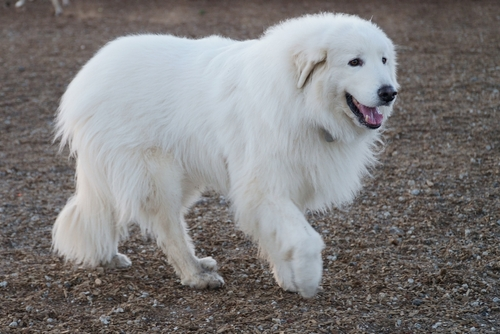
Before embarking on crate training, it’s vital to understand the specific traits and needs of the Great Pyrenees. This knowledge will enable you to tailor your approach effectively.
Historical Background and Breed Purpose:
-
Origins: The Great Pyrenees dogs originated in the Pyrenees Mountains, where they were used to guard sheep from predators. This historical role as a protector influences their behavior and temperament.
-
Working Dog Legacy: Their history as independent working dogs means they are used to making decisions on their own, which can impact their response to training.
Key Temperament Traits:
-
Calm and Gentle: Despite their size, Great Pyrenees are known for their calm and gentle demeanor, especially in a family setting.
-
Protective Nature: They are inherently protective, making them excellent watchdogs. This trait can sometimes manifest as wariness towards strangers or new environments.
-
Independence: These independent dogs might pose a challenge in training, as they can be less eager to please compared to other breeds.
Physical Characteristics Relevant to Crate Training:
-
Size Considerations: Typically weighing between 85 to 160 pounds, the Great Pyrenees requires a large, sturdy crate. It’s essential to choose a crate that can comfortably accommodate their size.
-
Space Needs: They need enough space to stand, turn around, and lie down comfortably. Crates with adjustable dividers are beneficial as they can be modified as your dog grows.
-
Temperature Sensitivity: Their thick coat, designed for cold climates, means they can easily overheat. Ensure their crate is placed in a cool, well-ventilated area.
Understanding these aspects of the Great Pyrenees is crucial for effective crate training. Their independent nature requires a patient, consistent approach, while their size and protective instincts necessitate special considerations in choosing and placing the crate. With these factors in mind, you can create a positive crate training experience tailored to your Great Pyrenees’s unique characteristics.
3. Choosing the Right Crate

Selecting an appropriate crate is a foundational step in crate training your Great Pyrenees. Considering the breed’s size and characteristics, the crate must be a perfect blend of comfort, safety, and functionality.
Determining Appropriate Crate Size:
-
Spacious Interior: Given the Great Pyrenees’ large size, a crate measuring at least 48 inches in length is often necessary. However, individual dog sizes vary, so measure your dog’s length and height to ensure the crate is large enough.
-
Room to Move: The crate should allow your dog to stand up without crouching, turn around comfortably, and stretch out fully when lying down.
-
Growth Consideration: For puppies, consider a crate with dividers that can expand the usable space as they grow.
Material Types: Pros and Cons:
-
Wire Crates: These provide excellent ventilation and visibility, which can help your dog feel less confined. They are also sturdy and often come with adjustable partitions. However, they can be heavy and bulky to move.
-
Plastic Crates: Ideal for travel, plastic crates offer more privacy and are lightweight. They might not provide as much airflow, which is a consideration for a thick-coated breed.
-
Soft-Sided Crates: While not typically suitable for large, strong breeds like the Great Pyrenees due to durability concerns, they are an option for well-trained dogs and for travel.
Essential Crate Features for Comfort and Safety:
-
Sturdy Latch: Ensure the crate has a secure latch that your dog cannot easily open.
-
Ventilation: Proper airflow is crucial to prevent overheating, especially in warmer climates or seasons.
-
Non-Toxic Materials: The crate materials should be non-toxic and safe for your dog, especially if they tend to chew.
-
Ease of Cleaning: Look for a crate that is easy to clean, as hygiene is important for your dog’s health.
Choosing the right crate for your Great Pyrenees is about balancing their physical needs with the practicality of daily use. The crate should be a safe, comfortable and quiet place for your dog, supporting the overall goal of positive crate training.
4. Preparing for Crate Training
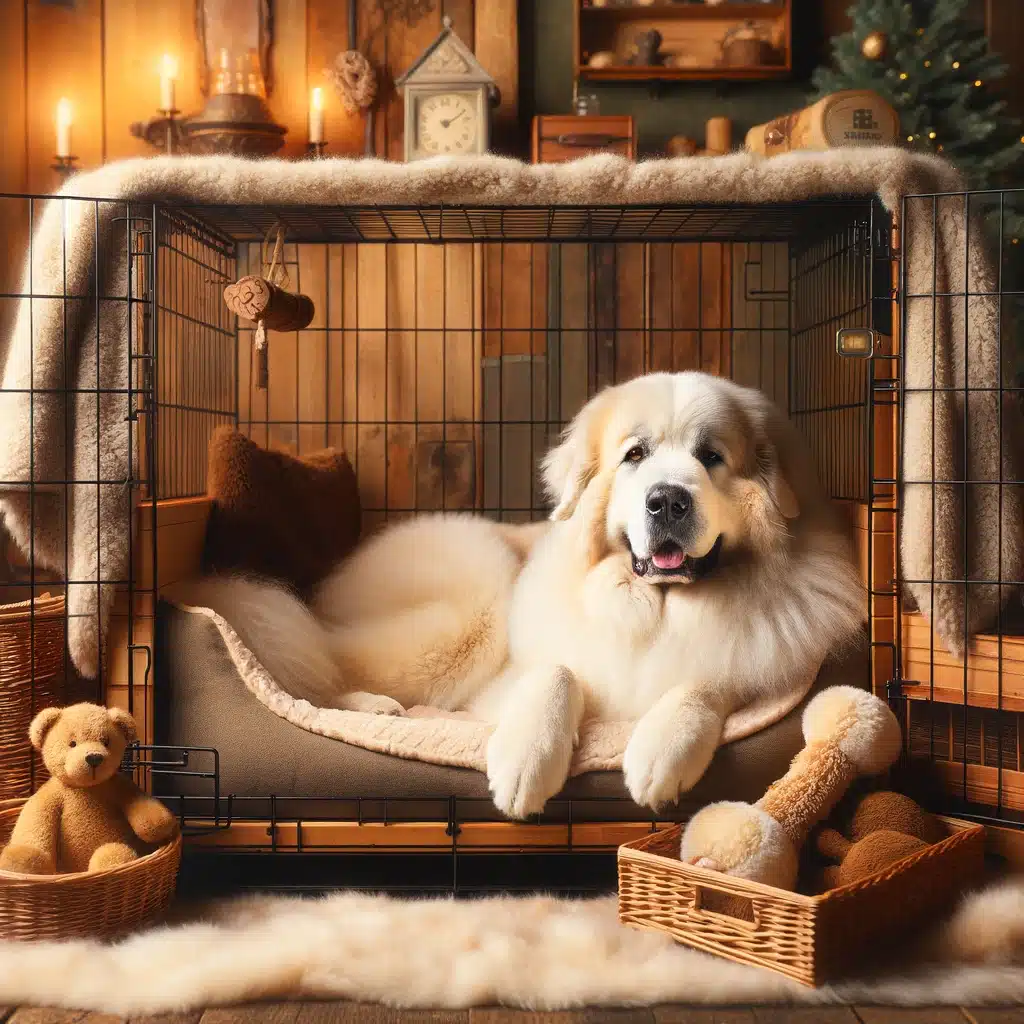
Proper preparation is essential for successful crate training, especially for a breed like the Great Pyrenees. Setting up the crate correctly and creating a positive association with it from the start can significantly impact the training’s effectiveness.
Selecting the Optimal Location for the Crate:
-
Quiet yet Accessible Area: Choose a location that is quiet enough to offer a peaceful retreat but still within the family’s living area. This helps your dog feel included and secure.
-
Avoid High Traffic Zones: Placement away from high traffic areas reduces stress and distractions, making the crate a calm space.
-
Temperature Consideration: Ensure the area is not prone to temperature extremes. Avoid direct sunlight, drafts, and proximity to heating or cooling vents.
Familiarization Strategies: Making the Crate Appealing:
-
Introduce Gradually: Let your dog explore the crate at their own pace. Never force them to enter, as this can create negative associations.
-
Use Treats and Toys: Encourage exploration and spending time in the crate by using treats, favorite toys, or feeding meals inside the crate.
-
Positive Reinforcement: Use a cheerful voice and praise when your dog shows interest in the crate or enters willingly. This reinforces the crate as a positive space that your Great Pyrenees dogs respond well to.
Initial Interaction with the Crate:
-
Door Open Policy: Initially, leave the crate door open to allow your dog to explore without feeling trapped.
-
Short Sessions: Start with short sessions in the crate, gradually increasing the duration as your dog becomes more comfortable.
-
Consistency is Key: Regular, consistent interaction with the crate helps establish it as part of the daily routine.
Proper preparation and a positive introduction to the crate set the foundation for successful crate training. For the Great Pyrenees, a breed with a protective and independent nature, ensuring the crate is seen as a safe and enjoyable space is crucial. This approach helps to mitigate any potential anxiety associated with the crate and facilitates smoother training progress.
Read More: Getting Your Puppy to Like Their Crate
5. Step-by-Step Training Process
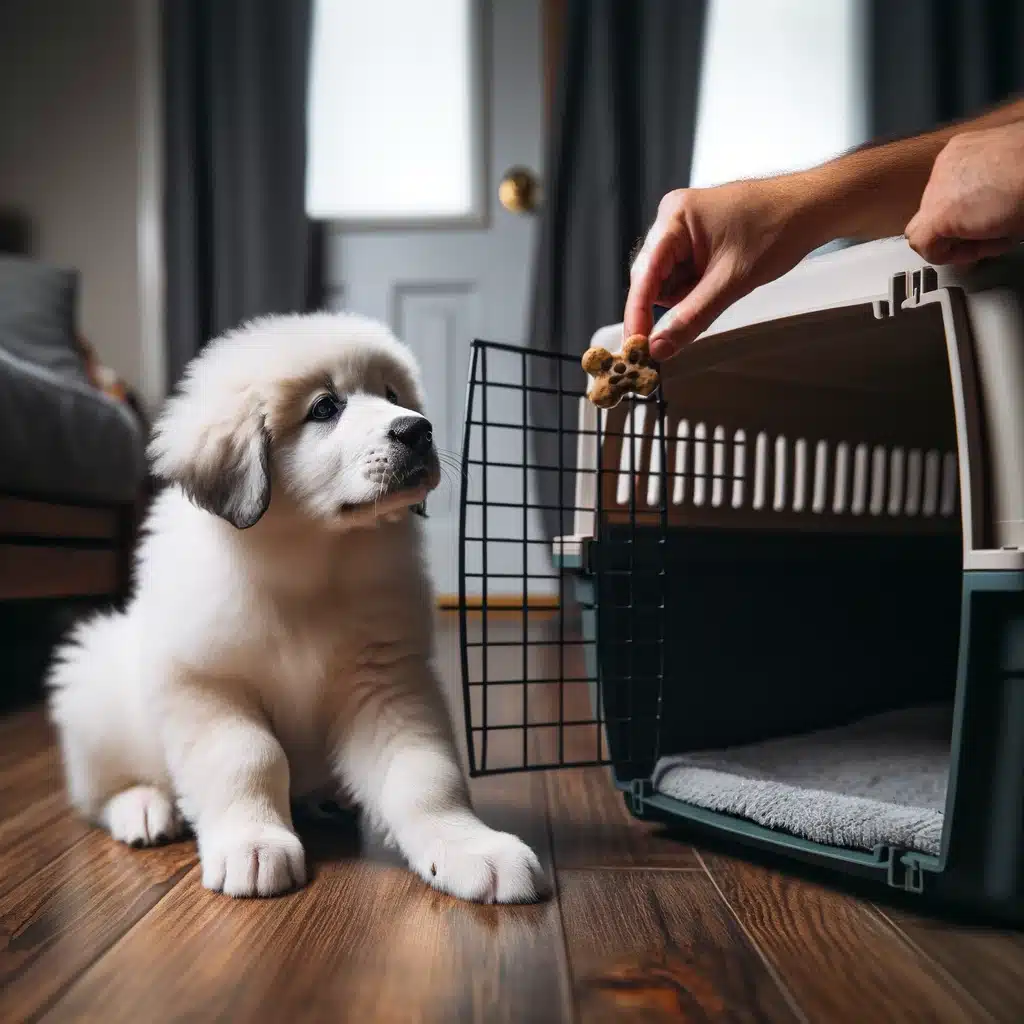
Successfully crate training a Great Pyrenees requires a structured and patient approach. This step-by-step process ensures that your dog not only becomes comfortable with the crate but also views it as a safe and enjoyable space.
Phase 1: Acclimation and Comfort Building
-
Introduce with Positive Associations: Begin by encouraging your dog to explore the crate with treats and favorite toys. Use positive reinforcement and basic commands to create a pleasant association.
-
Feed Meals Inside: Start feeding your dog their meals inside the crate, initially with the door open, to build a routine that associates the crate with enjoyable experiences.
-
Short Duration Stays: Encourage your dog to spend short periods in the crate, gradually increasing the time. Start with a few minutes and slowly extend it, always monitoring their comfort level.
Phase 2: Gradual Introduction to Longer Crate Time
-
Closing the Door: Once your dog is comfortable entering the crate for puppy food, meals, and treats, begin closing the door for short periods while they’re inside. Stay nearby initially and gradually increase your distance and the time the door is closed.
-
Calm Departure and Return: Practice leaving the room for brief moments and returning without overly exciting greetings. This helps minimize separation anxiety.
-
Incorporate into Daily Routine: Use the crate for short periods while you’re home, so it doesn’t become associated only with your absence.
Phase 3: Establishing a Routine
-
Regular Crating Schedule: Establish a consistent schedule for crating times, such as during meals, sleep, or when you’re away from home. Consistency helps your dog understand expectations.
-
Longer Durations: As your Great Pyrenees grows more accustomed to the crate, you can begin leaving them crated for longer periods, ensuring they have had enough exercise and potty breaks beforehand.
-
Overnight Crating: If your goal includes overnight crating, start by placing the crate in your bedroom or nearby, gradually moving it to the desired location over time.
Remember, the Great Pyrenees is an independent breed, and patience is key in crate training. Some dogs may adapt quickly, while others need more time. Be consistent with your positive training methods and approach, and always prioritize your dog’s comfort and well-being. Recognize and celebrate small progress, as each step is an achievement towards successful crate training.
6. Dealing with Common Challenges

Crate training a Great Pyrenees, like any other breed, can sometimes present challenges. Addressing these effectively is crucial for a smooth and successful training process.
Recognizing and Addressing Separation Anxiety:
-
Identify the Signs: Common signs of separation anxiety in dogs include excessive barking, whining, scratching at the crate, and destructive behavior when left alone.
-
Gradual Desensitization: Start with leaving your dog in the crate for short periods while you are at home, and gradually increase the time you are away. This helps your dog get used to being alone without feeling abandoned.
-
Comforting Items: Provide a piece of clothing with your scent or a favorite toy in the crate to help soothe your dog during your absence.
Read More: The Best Dog Crates for Anxiety
Techniques for Overcoming Resistance and Fear:
-
Positive Reinforcement: Use treats, praise, and their favorite toys to make the crate a rewarding place to be. Avoid using the crate as a punishment.
-
Slow and Steady Approach: If your Great Pyrenees shows reluctance or fear towards the crate, slow down the training process. Spend time sitting near the crate and encouraging them gently to explore and enter at their own pace.
-
Consistent Training Routine: Maintain a consistent routine for crate training to help your dog understand what to expect, reducing resistance over time.
Managing Barking and Whining: Do’s and Don’ts:
-
Do Not Reward the Behavior: If your dog barks or whines in the crate, avoid giving them attention until they calm down. Acknowledging the behavior can reinforce it.
-
Ensure Basic Needs are Met: Before crating, ensure your dog has been fed, has had enough exercise, and has gone to the bathroom.
-
Seek Professional Advice: If excessive barking or whining continues, consider consulting a professional dog trainer or behaviorist for targeted advice.
Dealing with these common challenges requires patience, understanding, and consistency. Every Great Pyrenees is unique, and their response to crate training can vary. Tailoring your approach to your dog’s individual needs and consulting professionals when necessary can significantly enhance the effectiveness of the great pyrenees training itself.
Read More: Dealing With Crate Training Regression
7. Advanced Crate Training Techniques
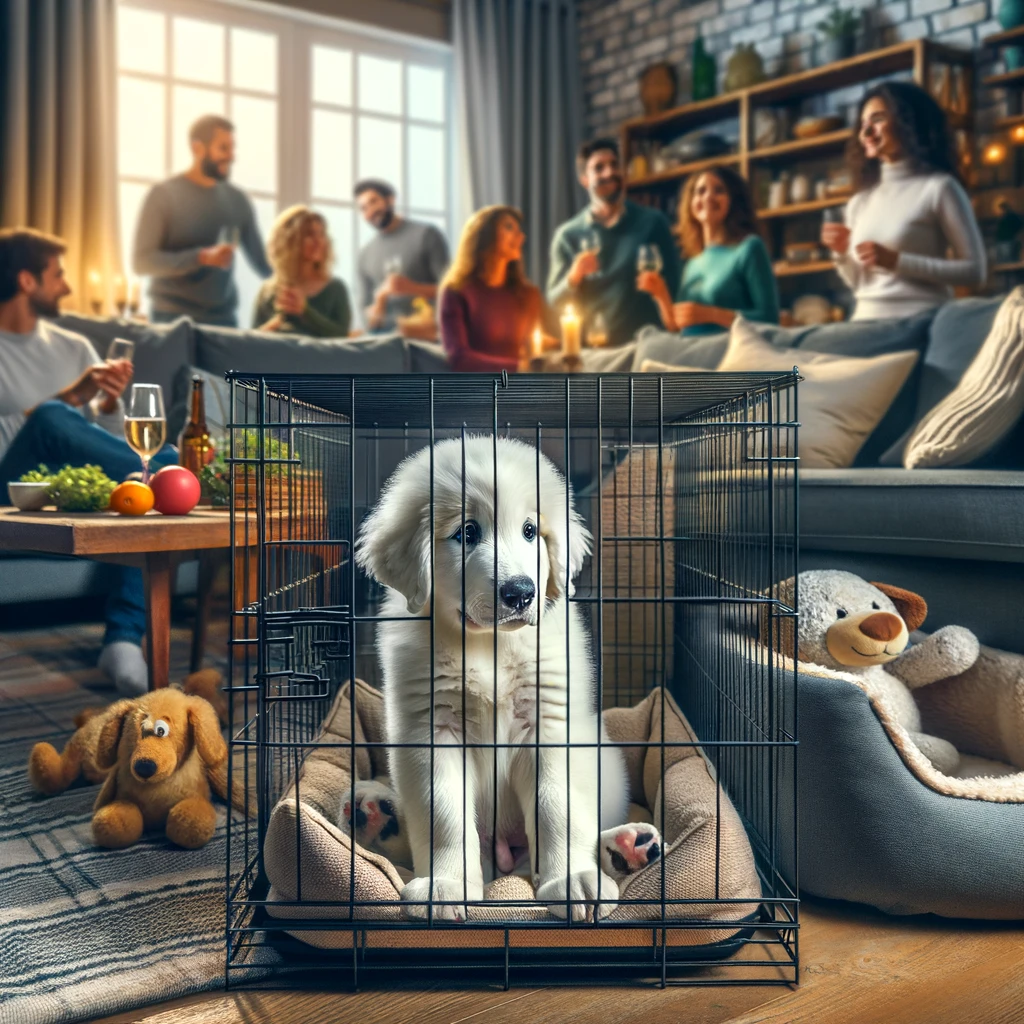
Once your Great Pyrenees has mastered the basics of crate training, you can introduce advanced techniques to further enhance their comfort and adaptability. These techniques are particularly beneficial for managing longer periods in the crate and integrating the crate into your daily routine.
Training for Specific Situations: Travel, Guests, etc.:
-
Travel Preparation: If you plan to travel with your Great Pyrenees, acclimatize them to spending more time in the crate. This can include simulating travel conditions like longer crate times and introducing motion experiences, if possible.
-
Guest Management: Use the crate to manage your dog’s behavior around guests. Start with short periods in the crate when guests arrive and gradually increase as your dog becomes more comfortable.
Long-Term Crate Stays: Ensuring Well-being:
-
Comfort Upgrades: For longer stays, ensure the crate is as comfortable as possible. Consider adding extra padding or a favorite blanket to create a cozy environment.
-
Regular Breaks: Even with longer crate durations, ensure your dog gets regular breaks for exercise, bathroom needs, and social interaction.
Behavioral Correction Using the Crate:
-
Crate as a Timeout Space: Utilize the crate as a ‘timeout’ space for calming down if your dog gets overly excited or agitated. Ensure this is done calmly and not as a form of punishment.
-
Consistency in Commands: Use consistent commands for entering and exiting the crate. This reinforces the crate as part of their regular training and behavior expectations.
Advanced crate training techniques should always prioritize your Great Pyrenees’ own safety, comfort and well-being. By gradually introducing these techniques and monitoring your dog’s response, you can ensure that the crate continues to be a safe and positive space for them.
8. Balancing Crate Time with Physical Activity
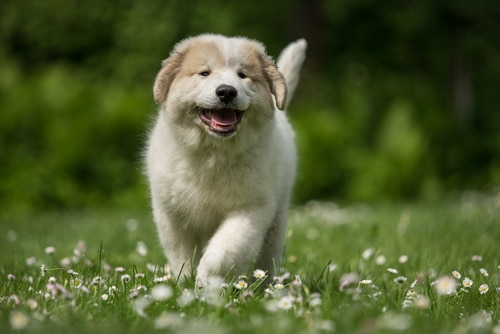
For a breed as large and active as the Great Pyrenees, balancing crate time with adequate physical activity is crucial for their overall health and happiness. Engaging in regular exercise not only helps in managing their energy levels but also contributes positively to their mental well-being.
Exercise Guidelines for the Great Pyrenees:
-
Daily Exercise Requirement: The Great Pyrenees needs regular physical activity to maintain their health. Aim for at least 30-60 minutes of exercise daily, which can include walks, playtime, or other forms of physical activities.
-
Types of Exercise: Due to their size and energy level, a mix of activities is beneficial. This can include walks, moderate hiking, and play sessions in a securely fenced area.
-
Mental Stimulation: Incorporate activities that also provide mental stimulation, such as training exercises, puzzle toys, or scent games. This breed enjoys challenges that engage their mind.
Integrating Crate Time and Playtime:
-
Before Crating: Ensure your Great Pyrenees gets a good amount of exercise before spending extended periods in the crate. This helps them to relax and rest comfortably while crated.
-
Breaks from the Crate: Provide regular breaks from the crate for physical activity and bathroom needs, especially if they are crated for several hours.
-
Post-Crate Activities: After releasing your dog from the crate, engage them in some form of physical activity to help them stretch out and expend pent-up energy.
Recognizing the Need for Physical and Mental Stimulation:
-
Watch for Signs of Boredom or Restlessness: If your Great Pyrenees shows signs of boredom or restlessness, such as pacing, whining, or excessive barking, it might indicate a need for more physical activity or mental stimulation.
-
Adjusting Exercise Routines: Be adaptable with your exercise routines. Factors such as age, health, and weather conditions can affect how much exercise your dog needs or can handle.
Balancing crate time with enough physical activity is key to a successful crate training experience for your Great Pyrenees. This balance ensures that they are not only physically fit but also mentally stimulated, leading to a well-rounded and contented pet.
Read More: Puppy Socialization Checklist
9. Training Across Life Stages
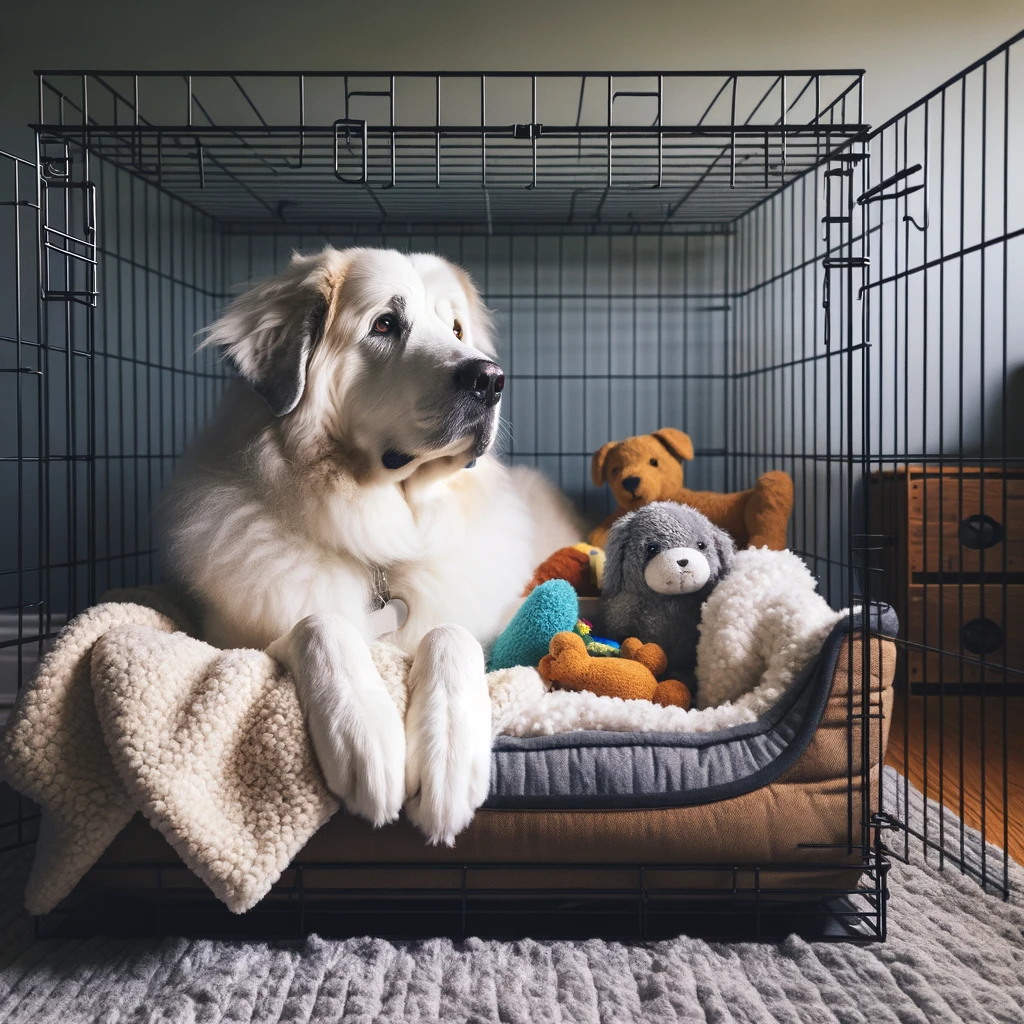
Crate training a Great Pyrenees effectively means adapting your approach to suit their different life stages. Each stage – puppy, adult, and senior – has its own set of challenges and requirements.
Puppy Phase: Establishing Foundations
Start Early: Begin crate training as soon as your new puppy first comes home. Puppies can start learning from around 8 weeks of age.
Short and Positive Sessions: Keep crate training sessions short and positive for young puppies. Their attention span is limited, and they require frequent bathroom breaks.
Build Positive Associations: Use treats, praise, and toys to make the crate a rewarding place. Avoid using the crate as punishment.
Frequent Bathroom Breaks: Puppies have small bladders and need to be let out for bathroom breaks more often other dogs, including during the night.
Adult Phase: Maintaining and Adjusting Training
Routine and Consistency: Adult Great Pyrenees thrive on routine. Maintain consistent crating schedules and routines.
Adjust Crate Size if Needed: Ensure the crate is adequately sized as your dog grows. An adult Great Pyrenees requires a large crate with enough space to sit and move comfortably.
Regular Exercise: Adult dogs need regular physical activity. Ensure your adult dog gets enough exercise before spending extended periods in the crate.
Senior Phase: Special Considerations for Older Dogs
Comfort is Key: Older dogs may develop joint problems or other health issues. Make sure their crate has comfortable bedding to support their joints.
Monitor Health Changes: Be aware of any health changes that might affect their crate training, such as incontinence or decreased mobility, and adjust your routine accordingly.
Patience and Understanding: Senior dogs may require more patience and understanding. Their pace may slow down, and they might need more time to adjust to changes.
Adapting your crate training approach to the specific life stage of your Great Pyrenees puppies is crucial for their well-being. By understanding their needs at each stage, you can ensure that the crate remains a positive and comfortable space for them throughout their life.
Read More: How to Crate Train an Older Dog
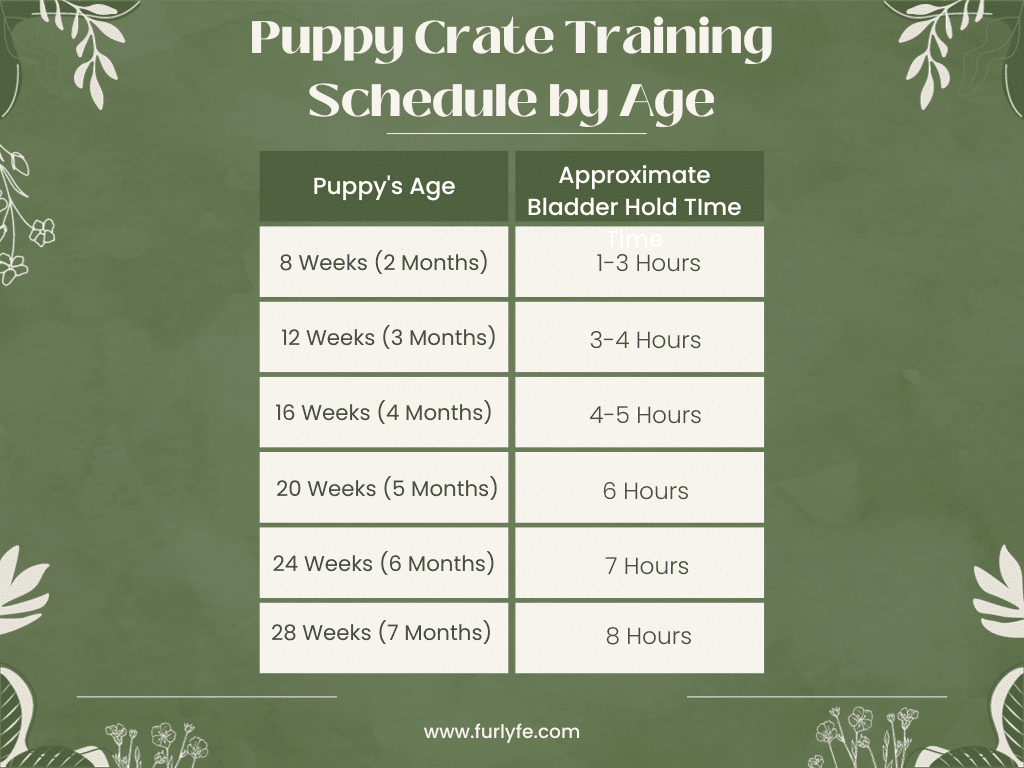
10. Busting Common Myths
When it comes to crate training, especially for large breeds like the Great Pyrenees, there are several myths that can create misconceptions and hinder the training process. Addressing these myths is crucial for a clear understanding and successful implementation of crate and training methods.
Myth 1: Crate Training Is Only for Punishment
-
Reality: Crate training is not about punishment; it’s about creating a safe, personal space for your dog. It’s a place for them to relax and feel secure, not a place for reprimand.
Myth 2: Large Breeds Like the Great Pyrenees Shouldn’t Be Crated
-
Reality: Regardless of size, crate training can be beneficial for all breeds. For large breeds, it’s about finding the right size crate and ensuring it’s a positive experience.
Myth 3: Crating Is Cruel and Causes Anxiety
-
Reality: When done correctly, crate training is not cruel and does not cause anxiety. In fact, it can provide a sense of security and a safe haven for your dog, especially in stressful situations.
Myth 4: Dogs Get Too Lonely in Crates
-
Reality: Dogs do need interaction and socialization, but they also need their own space. Crate training teaches them to be comfortable and calm when alone.
Myth 5: Once Crate Trained, a Dog Can Stay in for Any Duration
-
Reality: Even if a dog is crate trained, they shouldn’t be left in a crate for excessive periods. They need regular breaks for exercise, bathroom needs, and social interaction.
Understanding the truth behind these common myths helps in approaching crate training with a balanced and informed perspective. It’s important to remember that crate training, when done with understanding and care, can be a highly beneficial tool for both you and your Great Pyrenees.
11. Conclusion
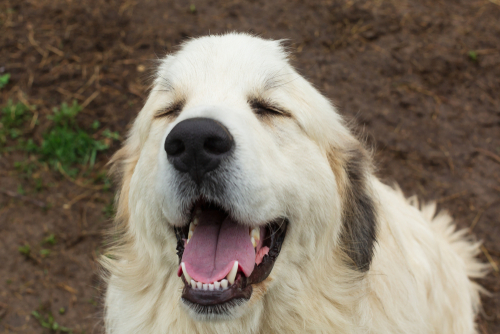
Successfully crate training your Great Pyrenees is a journey that fosters a safe, disciplined, and happy environment for your pet. Through this comprehensive guide, we’ve explored various aspects of crate training tailored specifically for the unique characteristics of the Great Pyrenees, aiming to make this a positive and rewarding experience.
Recap of Crate Training Benefits:
Safe Haven: The crate becomes a secure and private space where your older dog or your Great Pyrenees pup can relax and feel protected.
Aids in Potty Training and Behavior Management: Crate training is an effective tool in establishing house rules, good behavior and managing behavior in young puppies, especially for a large breed like the Great Pyrenees.
Facilitates Travel and Management in Various Situations: A crate-trained dog is easier to manage and transport, making trips to the dog park or vet visits less stressful for both the dog and the owner.
Reduces Anxiety and Stress: For dogs prone to anxiety, the crate offers a retreat to a familiar and comforting space.
Read More: Unlocking the Benefits of Crate Training
Encouragement for Ongoing Effort:
Patience and Consistency Are Key: Remember that each dog is unique, and the pace of training will vary. Consistency in your approach and patience with your dog’s progress are crucial.
Stay Informed and Adaptive: Be open to learning and adapting your methods as you go. What works at one stage of your dog’s life may need adjustment as they grow and develop.
Celebrate Achievements: Acknowledge both small and large milestones in your crate training journey. Each step forward is a testament to your commitment and your dog’s adaptability.
Crate training, when approached with understanding and a commitment to your dog’s well-being, can greatly enhance the bond you share with your Great Pyrenees. It’s not just about teaching a dog to stay in a crate but about creating a harmonious living situation that respects the dog’s nature and fulfills their needs.
FAQs: Crate Training Great Pyrenees
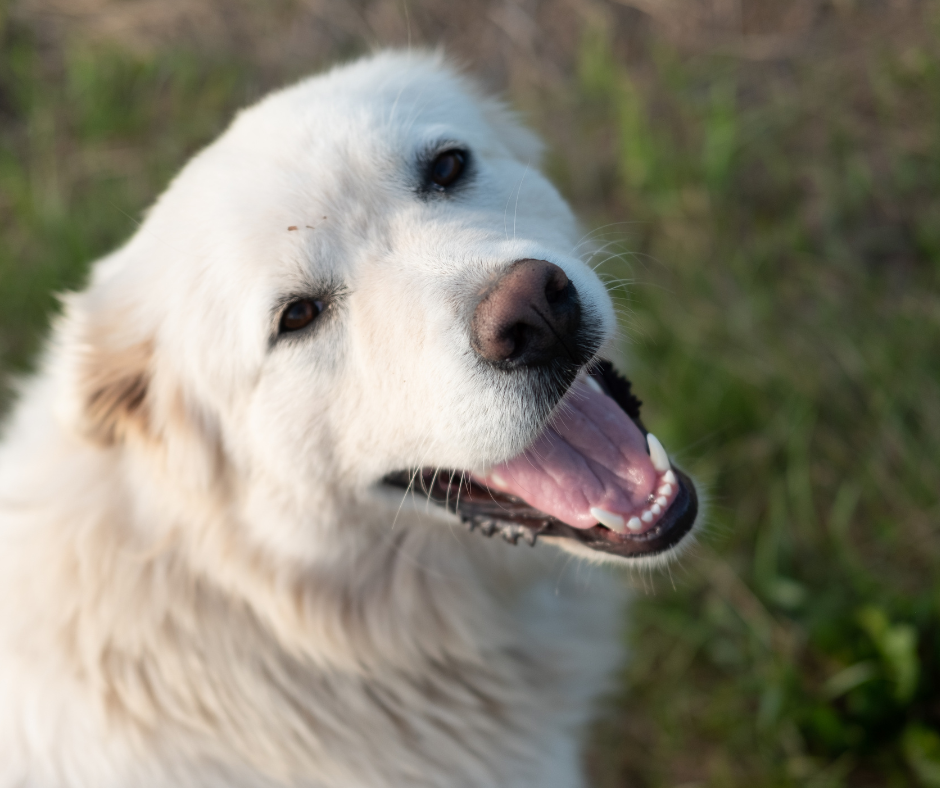
-
At what age should I start crate training my Great Pyrenees puppy?
-
You can start crate training as early as 8 weeks old. Begin with short periods and gradually increase the duration as your puppy gets comfortable.
-
-
Can crate training help with separation anxiety in Great Pyrenees?
-
Yes, crate training can provide a secure space for your dog and help reduce separation anxiety. However, it should be part of a broader strategy that includes behavior modification techniques.
-
-
How long can I leave my Great Pyrenees in the crate?
-
Adult Great Pyrenees can be crated for up to 8 hours with proper training. However, ensure they have adequate exercise and bathroom breaks. Puppies and seniors need more frequent breaks.
-
-
Is it ok to use the crate as a punishment for my Great Pyrenees?
-
No, the crate should never be used as a punishment. It should always be associated with positive experiences to ensure your dog feels safe and comfortable.
-
-
How do I ensure my Great Pyrenees doesn’t get too hot in the crate?
-
Place the crate in a well-ventilated area away from direct sunlight and make sure it’s not covered with heavy materials that could restrict airflow.
-
-
What should I do if my Great Pyrenees barks or whines in the crate?
-
Ensure all their needs are met before crating. If they continue to bark or whine, wait until they are quiet before letting them out to avoid reinforcing the behavior.
-
-
Can I crate my Great Pyrenees at night?
-
Yes, crate training can be used to provide a safe and comfortable place for your Great Pyrenees to sleep at night.
-
-
How do I make the crate comfortable for my Great Pyrenees?
-
Use a comfortable crate pad or bedding that suits their size. Adding a favorite toy can also help make the crate a more inviting space.
-


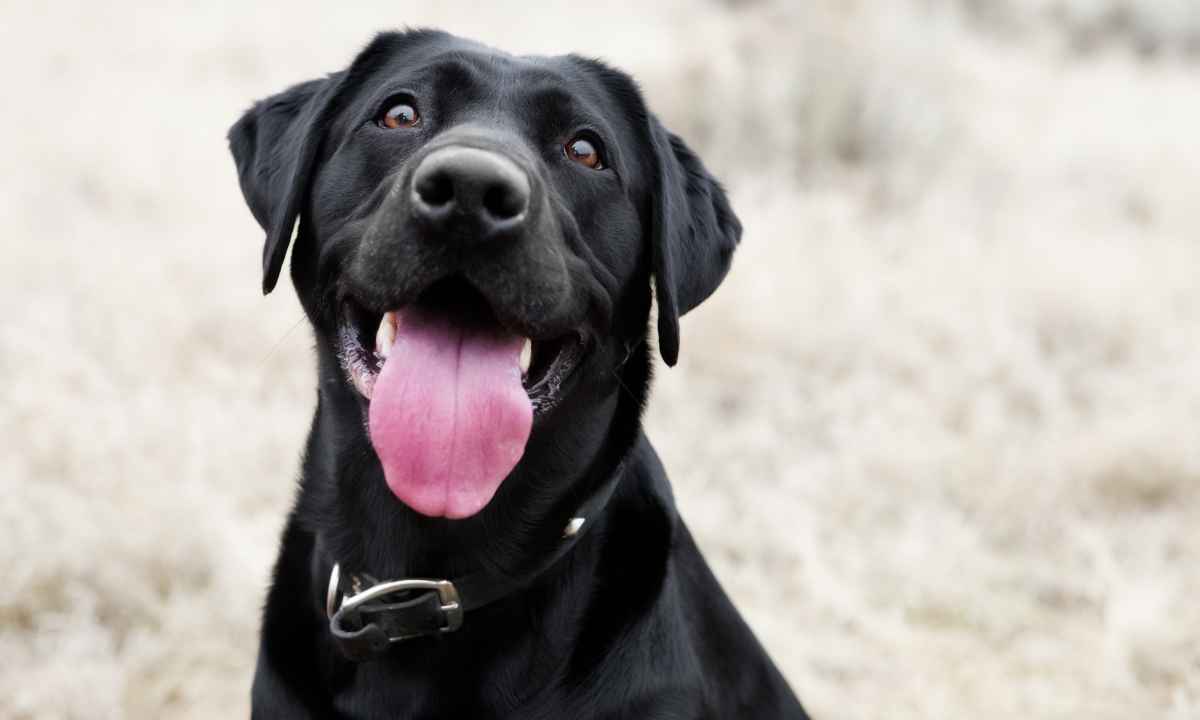
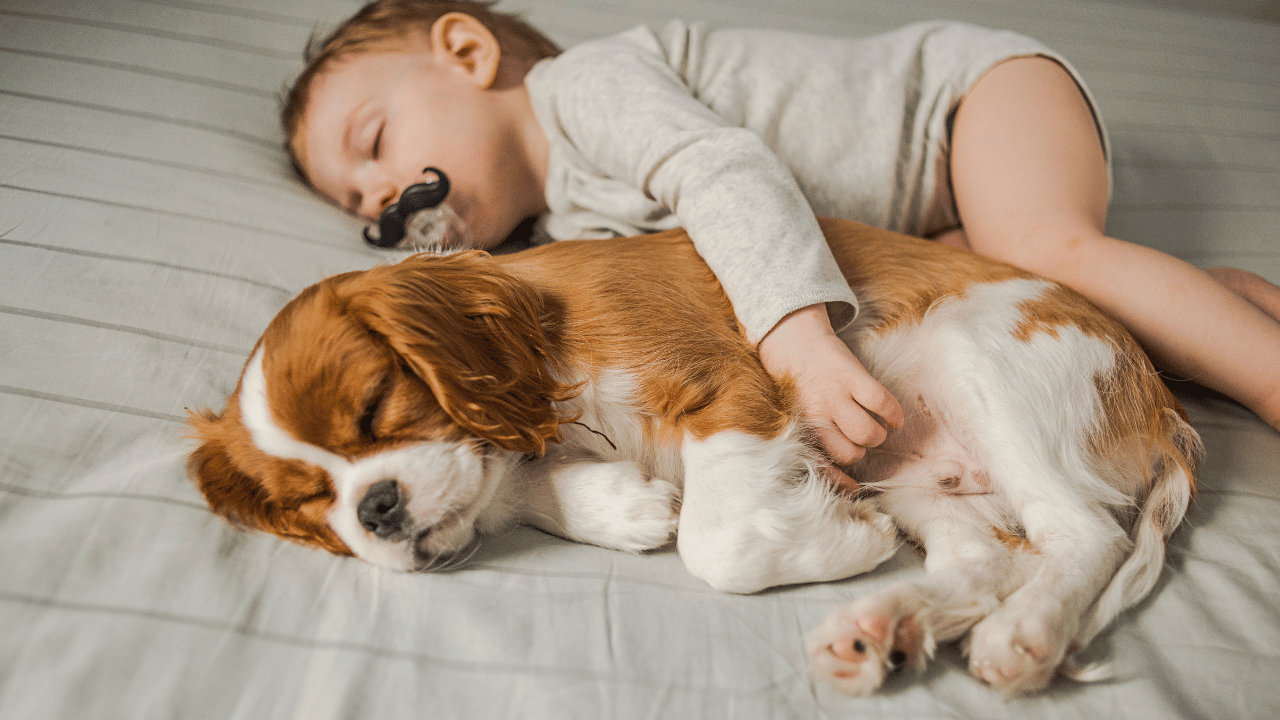


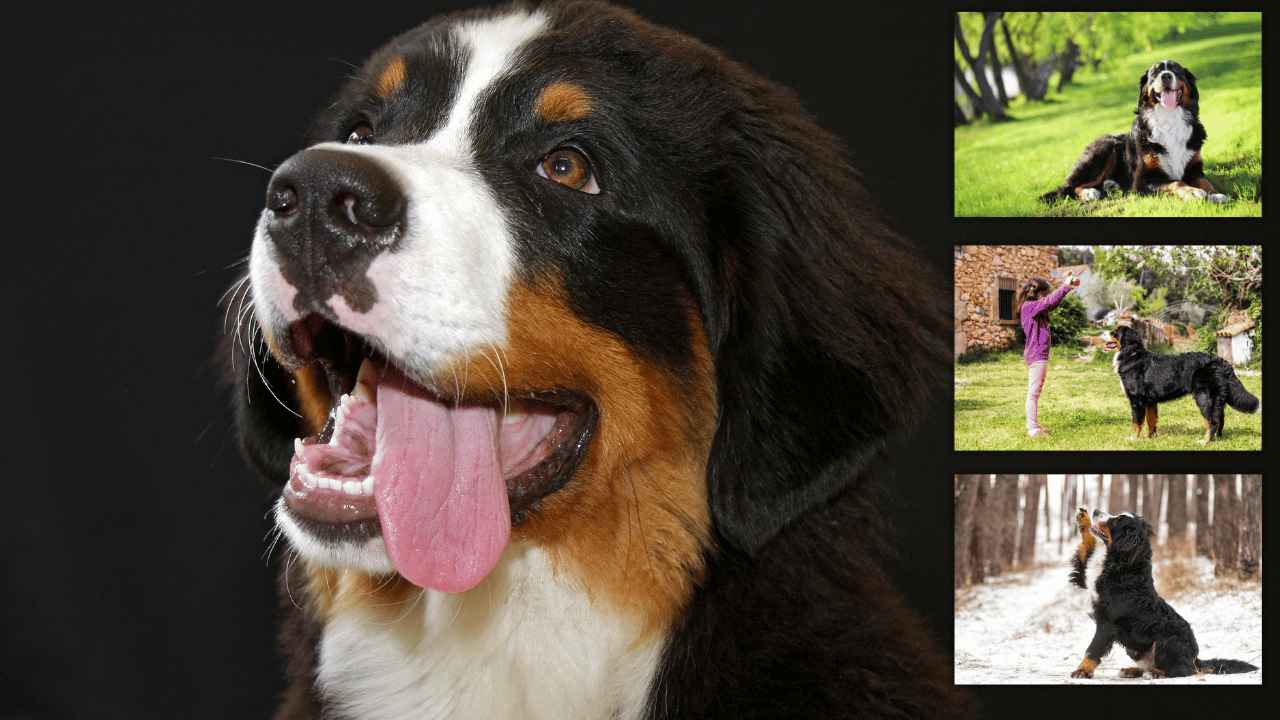

Get involved!
Comments